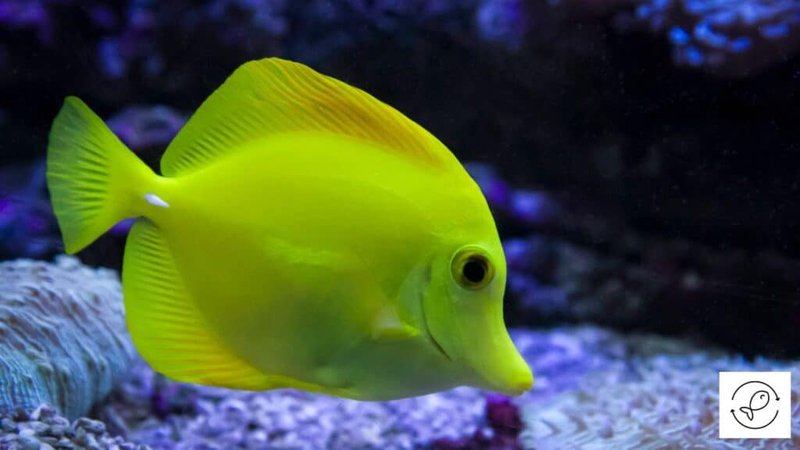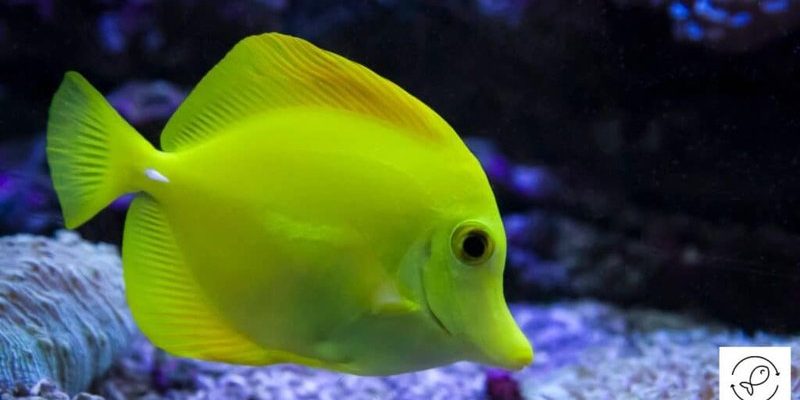
Think of a Yellow Tang as the tropical star of your aquarium. They’re not just eye candy; they play a role in keeping algae at bay, contributing to a healthy aquatic environment. So, what do they eat? Let’s dive into the feeding habits, preferences, and tips for keeping your Yellow Tang healthy and happy.
Understanding Their Natural Diet
Yellow Tangs are native to the coral reefs of the Pacific Ocean. In their natural habitat, they munch on a variety of marine plants, primarily algae. This diet is rich in nutrients that they need to maintain their health. Here’s the thing: in the wild, they graze on algae spread across the coral, making them natural little lawnmowers of the reef.
In captivity, it’s crucial to mimic this natural diet as closely as possible. While it may be tempting to feed them the same generic fish food you use for your other fish, this can lead to nutritional deficiencies. A balanced diet is key to their well-being, so let’s uncover the best food choices for these vibrant fish.
Types of Food for Yellow Tang
So, what exactly should you serve up to your Yellow Tang? Here’s a breakdown of the types of foods that will keep your fish healthy and happy:
- Marine Veggies: Seaweed or algae sheets are fantastic. You can find these at your local pet store. They’re like the pizza topping your Tang craves! Just remember to clip them to the tank, or your little buddy might treat them as a swimming snack.
- Pellets and Flakes: Look for high-quality herbivore pellets or flakes specifically designed for tangs. These often have the right mix of nutrients and vitamins.
- Fresh Vegetables: You can occasionally offer blanched spinach, zucchini, or broccoli. It’s like giving your Tang a garden salad! Just be sure to chop them fine to avoid any choking hazard.
- Frozen Food: Some fish owners include frozen herbivore mixes or spirulina cubes. These can be a great supplement to their diet.
Each type of food plays a part in creating a varied and balanced diet, which is essential for maintaining their energy and health.
Feeding Frequency and Portions
When it comes to feeding your Yellow Tang, frequency and portion control are crucial. Overfeeding can lead to health problems, just as underfeeding can leave them weak and lethargic. Here’s a quick guideline to help you out:
– Frequency: Aim to feed your Yellow Tang two to three times a day. Offering smaller amounts more frequently is better than one big meal. This mimics their natural grazing behavior.
– Portion Size: A good rule of thumb is to only give them as much food as they can consume in about 2-3 minutes. If there’s leftover food floating around, you might be giving too much, which can cloud the water and encourage algae growth.
You might be wondering why portion control matters so much. Excess food can lead to poor water quality, which can stress your fish and lead to health issues. A happy Tang means a happy tank!
Watch for Signs of Hunger and Satiety
Being attentive to your Yellow Tang’s behavior can also help you understand their feeding needs better. Just like us, fish have their quirks when it comes to eating.
You’ll notice they are usually quite lively around feeding time. If your Yellow Tang is eagerly swimming to the top of the tank as soon as you approach, it’s a good sign they’re hungry. On the flip side, if they start ignoring food or seem less active, it might indicate they’re full or not feeling well.
Every fish has its personality, so pay attention. Keeping track of changes in their eating habits can alert you to any health concerns early on.
Avoiding Common Mistakes
When it comes to feeding your Yellow Tang, there are a few common pitfalls to avoid. Let me explain a couple of these to help you keep your fish in tip-top shape:
– Overfeeding: Seriously, this is the number one mistake many fish owners make. Just because your Tang acts like it’s starving doesn’t mean it needs a feast. Stick to those small, frequent meals instead.
– Ignoring Variety: A monotonous diet can lead to boredom and health issues. Mix it up! Offering a range of foods keeps their diet interesting and ensures they get all the nutrients they need.
– Not Monitoring Water Quality: Uneaten food can pollute your tank and make it hard to keep clean. Always remove any leftover food after feeding, and regularly check water quality to keep it healthy for your fish.
By steering clear of these common mistakes, you’ll set your Yellow Tang up for a long, healthy life.
Feeding a Yellow Tang is more than just tossing in a handful of flakes. When you understand their natural diet and needs—you’ll create a nourishing environment that helps your fish thrive. With the right food and proper feeding habits, your Yellow Tang will not only show off its stunning colors but also contribute to a balanced aquarium ecosystem.
Remember, a happy Tang means a happy tank. Keep an eye on their eating habits, mix up their meals, and enjoy watching them flourish in your aquarium. By following these guidelines, you’re on your way to creating a thriving, vibrant community in your aquatic world!

